#natureindoors
Explore tagged Tumblr posts
Text
Bringing Nature Indoors: The Power of Air Purifying Indoor Plants
Discover the transformative impact of air purifying indoor house plants, as they bring nature's vitality into your home or office space. Explore the remarkable ability of these green allies, air purifying indoor plants, to not only beautify indoor environments but also cleanse the air, fostering healthier living and enhancing overall well-being. Unveil the power of these natural purifiers that transcend mere decoration, creating sanctuaries where clean air and greenery coexist harmoniously, enriching both body and soul.

#airpurification#natureindoors#greenliving#indoorgardening#healthyhome#planttherapy#naturalairfilters#wellnessspaces#homedecorideas#cleanair#officeplants#plantcaretips#biophilicdesign#interiorgreenery
4 notes
·
View notes
Text
Bringing Nature to New Heights: The Beauty of Natural Vertical Gardens
How Leaf Landscape Transforms Walls into Lush Green Masterpieces
In today’s fast-paced urban world, greenery is no longer a luxury—it’s a necessity. But with limited space in homes and offices, finding ways to incorporate nature into daily life can be a challenge. This is where natural vertical gardens come in, offering an elegant and space-saving solution to bring the outdoors inside.
At Leaf Landscape, we specialize in creating stunning preserved moss walls and vertical gardens that add a refreshing touch of greenery without the hassle of regular maintenance.
Why Choose a Vertical Garden?
Space-Saving Greenery Vertical gardens make use of walls, turning unused spaces into vibrant, living works of art. Perfect for homes, offices, and commercial spaces, they bring a natural aesthetic without taking up valuable floor space.
Low Maintenance & Long-Lasting Unlike traditional plants, our preserved moss requires no watering, sunlight, or pruning, making it an effortless way to enjoy greenery all year round.
Air Purification & Wellness Green walls have been shown to improve air quality, reduce stress, and create a calming environment—making them an ideal addition to workplaces and homes alike.
Leaf Landscape: Elevating Green Design
At Leaf Landscape, we craft custom moss walls and vertical gardens tailored to your space and aesthetic preferences. Whether you’re looking for a modern, minimalist touch or a lush, forest-like ambiance, our designs bring nature indoors in the most elegant way possible.
Are you ready to transform your space with a natural vertical garden? Let’s create something green and breathtaking together!
Contact Leaf Landscape today and bring nature to your walls.
#LeafLandscape#VerticalGarden#GreenDesign#MossWall#PreservedMoss#IndoorGreenery#BiophilicDesign#EcoFriendlyDecor#SustainableLiving#NatureIndoors#WallGarden#GreenSpaces#InteriorDesign#UrbanJungle#LivingWalls
0 notes
Text
Unforgettable winter atmosphere/ the sound of fire and the cozy room atmosphere 🔥🛋️
#youtube#WinterAtmosphere#CozyRoom#SoundOfFire#Relaxation#HomeDecor#Fireplace#WinterVibes#CozyVibes#WarmthAndTranquility#Meditation#InteriorDesign#NatureIndoors#SoothingSounds#ComfortingAmbiance#LuxuryAndSimplicity#PeacefulEscape#WinterRelaxation#Fireside#HomeInspiration#ElegantLiving#MarbleFloor#GreenPlants#NaturalCharm#Unwind#CalmAndSerene#CozyEscape#WinterWonderland#FirelightMagic#SerenityInStyle
0 notes
Text
#IndoorPlantSanctuary#PlantLovers#GreenHome#IndoorJungle#PlantDecor#UrbanJungle#PlantsInTheHome#NatureIndoors#CozyPlantSpace#PlantSanctuary
0 notes
Text

Exploring Smart Home Trends for the Future! 🌟 becoming smarter every day. From voice-controlled lighting to automated temperature settings, the future of home interior design is all about integrating technology seamlessly. Imagine walking into your living room and having the perfect ambiance set automatically. Stay ahead of the curve with the latest trends in smart home technology and innovative interior design.
#SmartHome#FutureLiving#HomeInterior#EcoFriendly#GreenLiving#home interior#interiors#interior design#interiordecor#SmartLiving#InteriorTrends#NatureIndoors#HealthyLiving#HomeEntertainment#InteriorDesign#TechTrends
0 notes
Text
Benefits of Large Indoor Trees
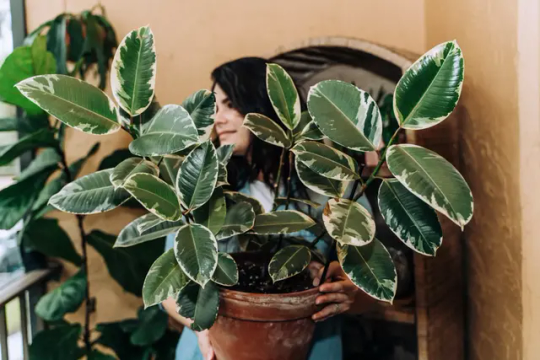
Indoor plants have become increasingly popular to add beauty, tranquility, and a touch of nature to our indoor spaces. While small houseplants are lovely, there's a growing trend towards the preference of large indoor plants and trees. These magnificent living sculptures not only create a visual statement but also offer a plethora of benefits for your home and well-being. Improved Air Quality: Large indoor trees, such as the rubber plant (Ficus elastica) and the peace lily (Spathiphyllum), are renowned for their air-purifying abilities. They help remove toxins like formaldehyde, benzene, and ammonia from the air, promoting cleaner and healthier indoor air quality. This can lead to reduced allergies and respiratory issues. Enhanced Aesthetics: Large indoor trees serve as stunning focal points in your interior design. They can transform an otherwise ordinary space into a lush, inviting oasis. Their striking foliage, unique shapes, and impressive size add a touch of elegance and grandeur to any room. Natural Humidifiers: Indoor trees release moisture through a process called transpiration. This natural humidifying effect can help maintain optimal indoor humidity levels, preventing issues like dry skin, cracked lips, and irritated sinuses, particularly in dry climates or during the winter months. Stress Reduction: Studies have shown that spending time around nature, even indoors, can reduce stress and anxiety levels. Large indoor trees create a calming atmosphere, providing a sense of tranquility and connection to the natural world. Their presence can help create a more relaxed and soothing living environment. Improved Concentration and Productivity: Large indoor trees can enhance cognitive function and productivity. Their presence helps reduce mental fatigue and improves focus and concentration, making them an excellent addition to home offices and study spaces. Sound Absorption: Indoor trees can also act as natural sound barriers, helping to absorb and reduce noise levels within your home. This can be especially beneficial in open-plan living spaces or areas with hard surfaces that tend to echo. Temperature Regulation: Large indoor trees can help regulate indoor temperatures by providing shade and cooling effects during the summer months. They act as natural insulators, helping to maintain warmer temperatures in the winter. A Connection to Nature: In our increasingly urbanized lifestyles, it's essential to maintain a connection to nature. Large indoor trees bring the outdoors in, providing a sense of harmony with the natural world and reducing the feeling of being disconnected from the environment. Longevity and Growth: Many large indoor trees are known for their longevity and relatively slow growth, making them low-maintenance additions to your home. With proper care, they can thrive for years, becoming beloved members of your household. Personal Well-being: Caring for a large indoor tree can be a rewarding and meditative experience. It encourages mindfulness, responsibility, and a sense of accomplishment as you watch your tree grow and flourish. Positive Aesthetic Impact: Large indoor trees can help soften the overall appearance of an interior by breaking up straight lines and adding curves and organic shapes. They blend seamlessly with various design styles, from modern to traditional, enhancing the overall visual appeal of your home.
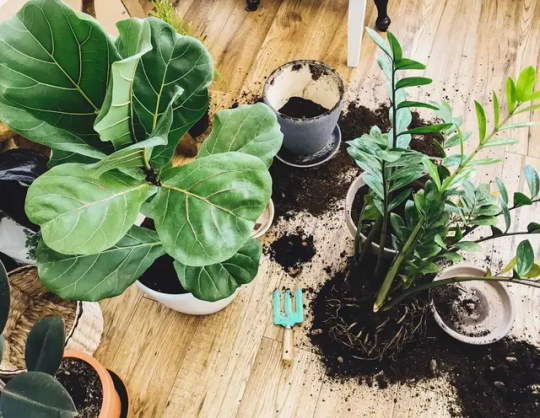
Indoor trees are a fantastic addition to interior decor, providing a touch of nature and elegance to your living spaces. There is a diverse range of indoor trees, each with its unique characteristics, care requirements, and aesthetic appeal. Here are some popular types of indoor trees to consider for your home: 1. Ficus Trees (Ficus spp.): - Fiddle Leaf Fig (Ficus lyrata): Known for its large, violin-shaped leaves, it's a popular choice for modern interiors. - Weeping Fig (Ficus benjamina): Features graceful, drooping branches with glossy leaves and is relatively low-maintenance. 2. Rubber Trees (Ficus elastica): - With its thick, shiny leaves and robust growth, the rubber tree is an excellent choice for beginners. 3. Snake Plant (Sansevieria trifasciata): - Also known as the mother-in-law's tongue, it's an incredibly resilient plant with tall, upright, sword-like leaves. 4. Yucca Tree (Yucca spp.): - Yucca trees have distinctive, sword-shaped leaves and can tolerate dry indoor conditions. 5. Bird of Paradise (Strelitzia reginae): - Known for its large, banana-like leaves and vibrant orange or white flowers when mature. 6. Palm Trees: - **Kentia Palm (Howea forsteriana):** A popular choice with feathery, arching fronds. - **Parlor Palm (Chamaedorea elegans):** A smaller palm with delicate, elegant fronds. 7. Money Tree (Pachira aquatica): - Often thought to bring good luck, it has a distinctive braided trunk and lush, hand-shaped leaves. 8. Norfolk Island Pine (Araucaria heterophylla): - Resembling a small Christmas tree, it has soft, needle-like leaves and is popular during the holiday season. 9. Citrus Trees (Citrus spp.) - Varieties like the dwarf lemon or lime tree can thrive indoors, providing fragrant blooms and fruit. 10. Bamboo (Bambusoideae spp.): - Lucky bamboo, a type of Dracaena, is a popular choice for its easy care and auspicious symbolism. 11. Schefflera (Schefflera actinophylla): - Also known as the umbrella tree, it has palmate leaves and a tall, bushy growth habit. 12. Japanese Maple (Acer palmatum): - Miniature varieties of this tree can be grown in containers and make stunning focal points. 13. Olive Tree (Olea europaea): - Dwarf olive trees are suitable for indoor cultivation, providing silvery leaves and a Mediterranean feel. 14. Bonsai Trees: - A wide range of trees, such as ficus, juniper, and maple, can be cultivated as bonsai for miniature indoor landscapes. 15. Dragon Tree (Dracaena spp.): - Dracaenas come in various species and are known for their vibrant, spiky foliage. 16. Aralia (Polyscias spp.): - Aralia plants have finely divided leaves and an elegant appearance, making them excellent choices for decorative purposes. 17. Ponytail Palm (Beaucarnea recurvata): - Despite its name, it's not a palm but a succulent with a unique, swollen trunk and long, cascading leaves. 18. Pothos (Epipremnum aureum): - Though technically a vine, pothos can be trained to grow up a support, giving it a tree-like appearance. 19. Cactus Trees: - Certain cactus varieties, like the saguaro cactus, can be grown indoors for an exotic desert aesthetic. 20. African Baobab (Adansonia digitata): - A slow-growing tree known for its swollen trunk, and it's suitable for indoor cultivation in large containers. Remember that the choice of indoor tree should consider your specific indoor conditions, such as light levels and humidity. You need to know the right care requirements of your selected tree to ensure it thrives in your home. Whether you opt for a towering ficus or a graceful palm, indoor trees can transform your living spaces and bring a breath of nature into your home.
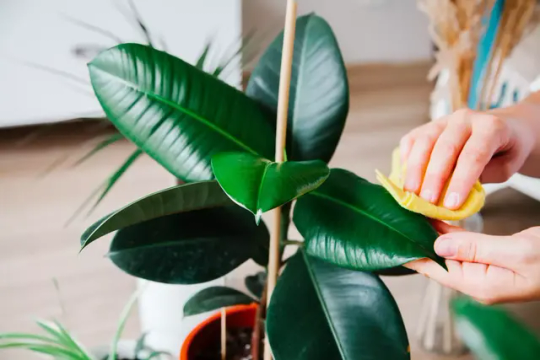
Caring for Large Indoor Trees Caring for large indoor trees requires attention to their specific needs, as they can be quite different from caring for smaller houseplants. Here are some essential guidelines to help you keep your large indoor trees healthy and thriving: Choose the Right Location: - Place your large indoor tree in a location with the appropriate light conditions. Different tree species have different light requirements. Some prefer bright, indirect light, while others may tolerate lower light levels. Research the specific needs of your tree and ensure it's in an ideal spot. - Light requirements: Some trees, like the ficus and rubber plant, prefer bright, indirect light, while others, such as the snake plant and ZZ plant, can tolerate low-light conditions. - Rotate your tree periodically to ensure even growth and prevent it from leaning toward the light source. Watering: - Large indoor trees typically require less frequent watering than smaller plants. Water thoroughly when the top few inches of the soil are dry, but avoid overwatering, which can lead to root rot. - Use a saucer or tray under the pot to catch excess water, but be sure the pot doesn't sit in standing water. Use a well-draining potting mix and ensure that the pot has drainage holes to prevent waterlogged roots. - Water your tree with room-temperature water and allow excess water to drain away. - Adjust your watering schedule based on the season; most trees require less water during the winter months when their growth slows. Humidity: - Many large indoor trees come from tropical regions and appreciate higher humidity levels. To increase humidity around your tree: - Use a humidity tray or a room humidifier. In extremely dry indoor environments, consider using a room humidifier to maintain suitable humidity levels. - Mist the leaves regularly, especially during dry winter months. - Grouping plants together can also increase local humidity. Temperature: - Most indoor trees prefer consistent indoor temperatures. Avoid placing them near drafts, radiators, or air conditioning vents, as extreme temperature fluctuations can stress the plant. - Keep your indoor tree away from cold windows during the winter to prevent cold damage. Fertilizers: - Indoor trees benefit from regular fertilization, especially during their active growth periods (usually spring and summer). - Feed your indoor tree with a balanced, water-soluble fertilizer during the growing season (spring and summer). Reduce or stop fertilizing during the winter when growth slows. - Follow the recommended dosage on the fertilizer packaging, and avoid over-fertilizing, which can harm the plant. Pruning and Maintenance: - Prune your tree as needed to remove dead or yellowing leaves, maintain its shape, and control its size. - Regularly inspect your tree for signs of pests or disease, such as yellowing leaves, brown spots, or webbing. Address any issues promptly. Repotting: - Large indoor trees typically don't need frequent repotting. Repot when the tree has outgrown its current container or when the roots become crowded. - Choose a slightly larger pot with good drainage and refresh the potting mix during repotting. - Use a well-draining potting mix suitable for your tree's species. Support and Staking: - If your large indoor tree has a tall or top-heavy growth habit, provide adequate support with stakes or a plant support structure to prevent it from leaning or toppling. - Check the tree's ties and stakes periodically to ensure they are not cutting into the bark. Seasonal Care: - Adjust your care routine seasonally. Most indoor trees experience a period of reduced growth during the winter. Reduce watering frequency and avoid fertilizing during this time. - As daylight hours increase in spring and summer, resume regular watering and fertilizing. Pest and Disease Control: - Keep an eye out for common indoor tree pests like spider mites, scale insects, and mealybugs. If you notice an infestation, treat your tree promptly with appropriate measures, such as neem oil or insecticidal soap. Rotate and Prune for Even Growth: - Rotate your large indoor tree periodically to ensure even exposure to light and prevent one-sided growth. - Prune the tree to maintain its shape and remove any leggy or overgrown branches. Observation and Patience: - Finally, observe your tree regularly. Changes in leaf color, drooping, or unusual growth patterns may indicate an issue that needs attention. - Be patient with your tree; it may take time to adapt to its new indoor environment. Be observant of any changes in leaf color, growth patterns, or signs of stress. - Adjust your care routine as needed based on your tree's response to its environment. Remember that each species of indoor tree has unique care requirements. You need to provide the right conditions and care, so that your large indoor tree can become a stunning and healthy focal point in your home. Large indoor trees are more than just decorative elements; they are living, breathing additions to your home that offer a multitude of benefits. From purifying the air to promoting relaxation and concentration, these magnificent plants have the power to transform your indoor space into a healthier, more beautiful, and harmonious environment. Consider adding a large indoor tree to your home and experience the positive impact it can have on your well-being and lifestyle.
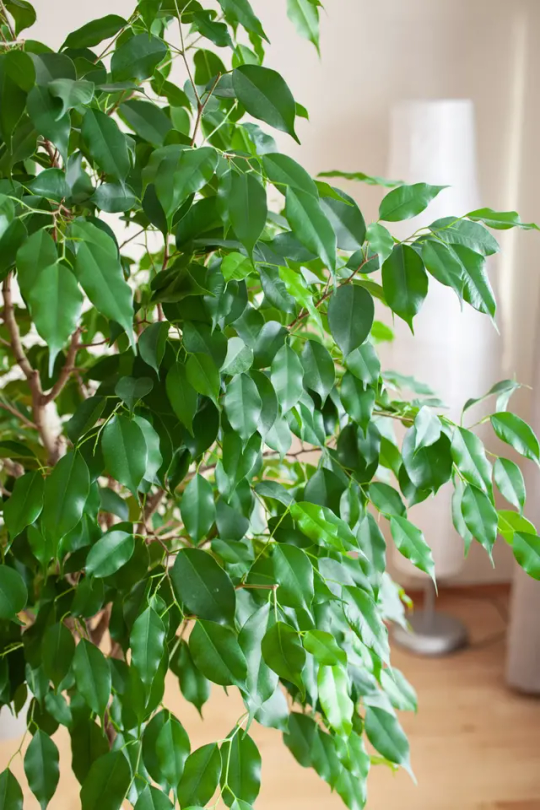
Read the full article
0 notes
Text


1 note
·
View note
Photo

ORCHID UPDATE! This gorgeous orchid has two blossoms and three buds! Check out the new flower, the first flower, and the full budding stem in these photos. ... #orchidsofinstagram #orchidflower #orchids #groworchids #youcangrow #flowerpower #flowerphotography #houseplants #indoorplants #tropicalplants #bloom #blossom #beauty #naturemoment #natureindoors (at San Fernando Valley!!) https://www.instagram.com/p/CNvrFfbA5fZ/?igshid=1rb5tuyhae6is
#orchidsofinstagram#orchidflower#orchids#groworchids#youcangrow#flowerpower#flowerphotography#houseplants#indoorplants#tropicalplants#bloom#blossom#beauty#naturemoment#natureindoors
0 notes
Text

8 notes
·
View notes
Photo

When I accidentally broke off a pilea stem, I just put it in water not expecting it to root...but here we are! ~ This was after 2 months. I guess some plants have stems contain the cells necessary for differentiating into roots! ~ ~ #pilea #pileapeperomioides #plantstyling #plantparenthood #nature #natureindoors #plants #plantgoals #iloveplants #greenfingers #houseplants #urbanjunglebloggers #indoorgardening #houseplantjournal #houseplantclub #propagationstation #propagation
#pilea#propagation#plantgoals#greenfingers#houseplants#houseplantjournal#urbanjunglebloggers#propagationstation#iloveplants#houseplantclub#plantstyling#plants#nature#indoorgardening#pileapeperomioides#plantparenthood#natureindoors
142 notes
·
View notes
Photo
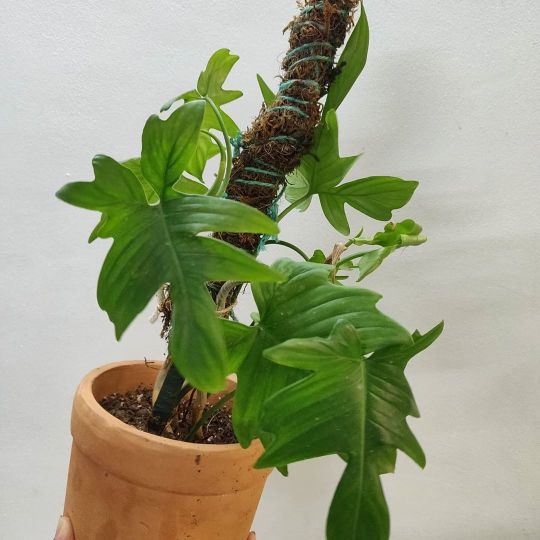
Philodendron pedatum is a low maintenance plant that can quickly adjust to any indoor habitat. Philodendrons are native to the rainforests of Brazil. Pedatum is a climber and can grow very well indoors.Pedatum Philodendrons are exotic and stunning species and they are also helpful in purifying the air in your home. . Let's talk about it's care :- ,💦 🌄 🍀 . 🌄Light :- Philodendrons thrive in medium, bright, dappled sunlight about 8-10 hours each day. They can tolerate low light conditions too. . . 💦Watering :- As a general rule, water your plant when the top inch of soil appears dry.If overwatered, the Philodendron will rot.The potting mix must be kept moist and not wet. Make sure to drain all excess water. In summers mist the leaves every two days and in winter you can mist every three to four days. . . 🍀Potting mix :- Philodendrons do well in loose and well-drained soil. They grow well in soilless mixtures, for example, peat-vermiculite or peat-perlite. This species prefers a lightweight, yet nutritious soil that doesn’t dry out quickly. So u can make ur soil mix accordingly. . . 🍀Fertilizer :- The fertilizer should always be applied to moist soil to avoid injury to the roots.Pedatums are heavy feeders and a regular fertilizer with nitrogen will give you a healthy plant with big beautiful leaves. Slow growth and small leaves, is an indication that it isn’t getting enough fertilizer. @ihavethisthingwithurbanjungles @pausewithplants @houseplantclub @unitedbyfoliage @house_plant_community @officialplantfever @crazyplantrichasian @boysandgirlswithplants @soiled.in @witch_crafts @theidealhomeandgarden @mad_over_mud @zzbotanicalandhome @plant.vibrations . . . . #helloplantlover #helloplantlady #crazyplantpeople #botanicalpickmeup #botanicalwomen #naturephotography #natureindoors #houseplantsmakemehappy #houseplantcommunity #plantcommunity #naturelovers #houseplantaddict #houseplantdiary #greenhouse #greenthumb #plantmagic #urbanjunglebloggers #plantaholic #houseplantclub #moonshinephilodendron #plantlovinghome #plantsofinstagram #indoorjungle https://www.instagram.com/p/CFyq9rUg9eX/?igshid=awry3mhjsvgx
#helloplantlover#helloplantlady#crazyplantpeople#botanicalpickmeup#botanicalwomen#naturephotography#natureindoors#houseplantsmakemehappy#houseplantcommunity#plantcommunity#naturelovers#houseplantaddict#houseplantdiary#greenhouse#greenthumb#plantmagic#urbanjunglebloggers#plantaholic#houseplantclub#moonshinephilodendron#plantlovinghome#plantsofinstagram#indoorjungle
0 notes
Photo

I love making tiny bouquets in tiny vases. Dahlias in a vintage green vase on the window sill above my sink. #dahlia #tinybouquet #gardenbouquet #natureindoors https://www.instagram.com/p/CEculcmhr9M/?igshid=19kw69ass1h1j
0 notes
Photo

Yellow Vase with yellow flakes and Snake Plant + Rattan Vases with Cassava Branches #HomeDecor #HomeCraft #NatureIndoors #GreeneryIndoor (at Henrietta, Plaines Wilhems, Mauritius) https://www.instagram.com/p/B_zSRLTgBEA/?igshid=15a7d858vzzkr
0 notes
Photo

I think the burgundy rubber plants are becoming my faves. They’re super chill. They mind their business. Not demanding at all. #burgandyRubberPlant 🌿🌴🌾🌱🎍Not alone any more 🌱💜🌿 #plants #rubberplant #plantsplantsplants #plantsofinstagram #houseplants #houseplantsofinstagram #monstera #burlemarx #blackgirlswhogarden #blackgirlswithgardens #houseplantcommunity #plantsmakepeoplehappy #plantsarefriends #livingwithplants #plantgang #natureindoors #urbanjungle #blackwithplants #afrobohemian #houseplantsofinstagram (at Woodbridge, Detroit) https://www.instagram.com/p/B_kHTpFJoRU/?igshid=158l7d6prfpul
#burgandyrubberplant#plants#rubberplant#plantsplantsplants#plantsofinstagram#houseplants#houseplantsofinstagram#monstera#burlemarx#blackgirlswhogarden#blackgirlswithgardens#houseplantcommunity#plantsmakepeoplehappy#plantsarefriends#livingwithplants#plantgang#natureindoors#urbanjungle#blackwithplants#afrobohemian
0 notes
